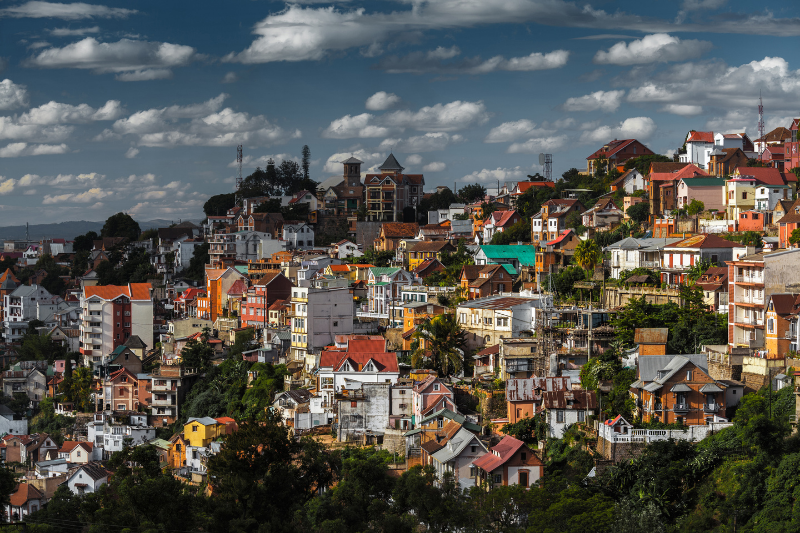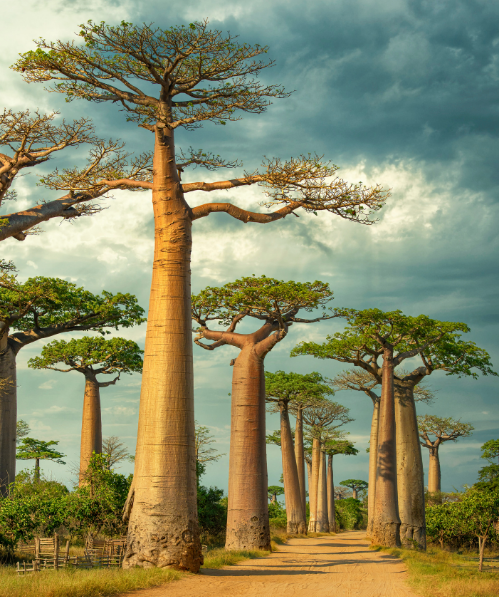Madagascar Travel Guide 2025: Itinerary, Seasons, Visa & Local Tips
Wild, wondrous, and wonderfully unique—Madagascar is where nature wrote its own rulebook. From lemurs leaping through ancient baobab groves to coral reefs teeming with marine life, this island off Africa’s southeast coast is a biodiverse dream. This web-optimized Madagascar travel guide helps you discover the magic through a culturally respectful lens.
Quick Facts
Currency
Malagasy Ariary (MGA)
Language
Malagasy & French
Religion
Indigenous beliefs, Christianity
Visa
Visa-on-arrival or e-visa for many nationalities
Time Zone
GMT+3 (EAT)
Best Time to Visit
April to November (dry season)
Visa Requirements for Madagascar
- Visa-on-Arrival: Available for 15, 30, or 60 days
- E-Visa: Apply in advance at evisamada.gov.mg
- Documents Needed: Passport valid for 6+ months, return ticket, accommodation details
Best Time to Visit Madagascar in 2025
- Dry Season (Apr–Nov): Ideal for hiking, wildlife, and beaches
- Rainy Season (Dec–Mar): Lush greenery, fewer tourists, but some roads may be impassable
Top Festivals & Cultural Highlights
- Alahamady Be (Malagasy New Year): Celebrated in March with family feasts and ancestral rites
- Donia Music Festival (Nosy Be): September – Music, dance, and island vibes
- Zebu Festival (Ambalavao): May – Cultural parades and cattle showcases

Madagascar 10-Day Itinerary
Day 1: Arrival in Antananarivo
- Explore the capital city’s historic sites like Rova Palace and Andafiavaratra Palace
- Enjoy Malagasy cuisine at a local bistro
Day 2–3: Andasibe-Mantadia National Park
- Drive east to Andasibe
- Spot the famous Indri lemur and other endemic species
- Night walk to see nocturnal wildlife
Day 4–5: Akanin'ny Nofy (Palmarium Reserve)
- Visit via canal boat on Pangalanes Canal
- Meet rare lemurs in a semi-wild environment
- Relax by Lake Ampitabe
Day 6–7: Morondava & Avenue of the Baobabs
- Fly or drive to the west coast
- Sunset at the Avenue of the Baobabs—a must-see
- Optional: Kirindy Forest for fossa and dry deciduous wildlife
Day 8–9: Ifaty or Nosy Be (Beach Break)
- Choose Nosy Be (north) for island luxury and diving
- Or Ifaty (southwest) for coral reefs and quiet charm
Day 10: Return to Antananarivo & Departure
- Stop by local markets for handmade crafts and spices
- Transfer to airport
Budget Breakdown (Per Day, Per Person)
| Type | Budget Traveller | Mid-Range | Luxury |
| Accommodation | ₹1,500–₹3,500 | ₹5,000–₹8,000 | ₹12,000+ |
| Food | ₹500–₹1,000 | ₹1,200–₹2,500 | ₹3,500+ |
| Transport | ₹1,000–₹2,000 | ₹2,500–₹4,000 | ₹5,000+ |
| Attractions | ₹500–₹1,200 | ₹1,500–₹2,500 | ₹3,500+ |
| Total | ₹3,500–₹7,500 | ₹10,000–₹17,000 | ₹24,000+ |

Local SIM Cards & Connectivity
- Recommended Providers: Telma, Orange Madagascar, Airtel
- Buy SIM at the airport or local shops
- Expect ~AR 20,000 (₹500) for a basic tourist plan with data
Must-Know Travel Tips for Madagascar
- Getting Around: Domestic flights save time; bush taxis and private 4x4s are common
- Food: Try romazava (beef stew) and ravitoto (cassava leaves with pork)
- Eco-Etiquette: Support community-run lodges and avoid touching wildlife
- Health: Bring mosquito repellent; consult doctor for malaria medication
Final Thoughts: Why Visit Madagascar?
Madagascar is a once-in-a-lifetime destination that feels like another planet. From the haunting cries of lemurs in misty forests to the surreal silhouettes of baobab trees at sunset, this island invites you to connect deeply with nature and culture.
Remote. Rich. Rewarding. Madagascar 2025 is waiting.

